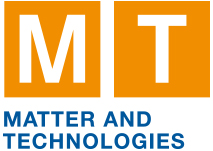Speaker
Description
X-ray spectroscopy at synchrotron light sources has emerged as one of the most powerful tools available for the characterization of the chemical, atomic, and electronic properties of materials. Existing x-ray spectrometers provide either excellent energy resolution at low efficiency or moderate energy resolution at high efficiency. Magnetic microcalorimeters (MMCs) may be a “gamechanger” as they promise outstanding energy resolution (already achieving a ΔEFWHM of 1.25 eV at 5.9 keV [1]), a large energy bandwidth, and extremely high detection efficiency. MMCs are ultra-sensitive cryogenic detectors, which rely on converting the energy from incident photons into heat. Using a sensitive thermometer based on the temperature-dependent magnetization of a paramagnetic material in a weak magnetic field, the change in magnetization due to an incoming photon is sensed with a superconducting quantum interference device (SQUID) [2].
We are currently investigating the feasibility of such a x-ray quantum sensor array at multiple synchrotron-radiation beamlines (i.e., X-SPEC, CAT-ACT, INE, and SUL-X) at the KIT Light Source using a universal, compact, and modular platform. The new instrumentation will not only greatly advance the available experimental techniques but also allow for the study of samples containing radionuclide materials with low concentrations, and/or in in situ and operando environments. In this contribution, we will show the current design concept of the detector platform as well as UO2 measured at the O K-edge with resonant inelastic (soft) x-ray scattering (RIXS) measured at the X-SPEC beamline, which will also be one of the first test materials for the MMC detector.
[1] Krantz, M.; Toschi, F.; Maier, B.; Heine, G.; Enss, C.; Kempf, S. Magnetic Microcalorimeter with Paramagnetic Temperature Sensors and Integrated Dc-SQUID Readout for High-Resolution X-Ray Emission Spectroscopy. Appl. Phys. Lett. 2024, 124 (3), 032601. https://doi.org/10.1063/5.0180903.
[2] Kempf, S.; Fleischmann, A.; Gastaldo, L.; Enss, C. Physics and Applications of Metallic Magnetic Calorimeters. J. Low Temp. Phys. 2018, 193 (3–4), 365–379. https://doi.org/10.1007/s10909-018-1891-6.
| Speed talk: | Normal speed talk selection |
|---|

